This tutorial will help you to configure Microsoft Outlook 2016 for a Private Email account.
For automatic email account set up you need to do the following:
1. Open Microsoft Outlook 2016 on your device. If don't have any mailboxes added yet, you will see Info >> Account Information page. Click the +Add Account button.
In case you have mailboxes set up before, go to the File tab >> Info >> Account Information page and click the +Add Account button:

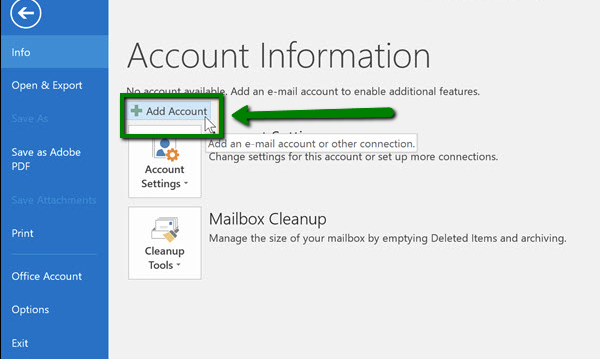
2. Check the
E-mail Account option and fill in the corresponding fields:
- Your Name: the name you would like the recipients of your emails to see
- E-Mail Address: your full Private Email address
- Password: password for your Private Email account
Make sure you do not have blank spaces in it.
NOTE: if by any chance you do not remember your password, you can easily reset it using the
following tutorial.
3. Once all the fields are filled, click
Next:
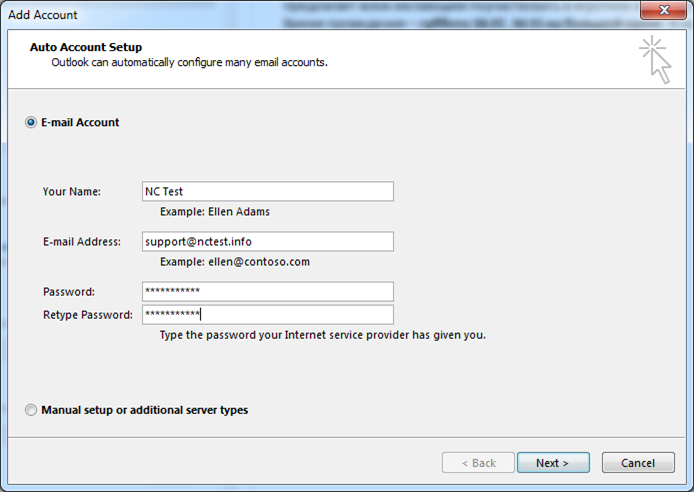
NOTE: if any warnings appear, disregard them and feel free to proceed.
If this option fails for some reason, try to follow the steps from scratch. If it does not help you can also try to set up email account manually.
In order to set up your email account in Outlook manually, complete the first step which is described above and then follow the instructions below:
1. Select the Manual setup or additional server types option and click Next:
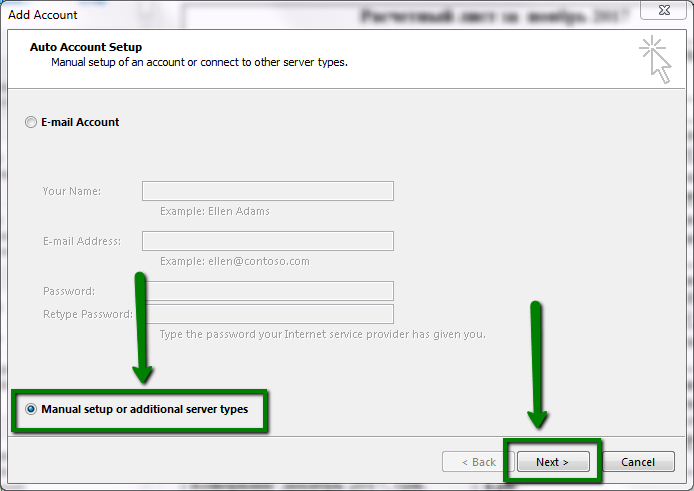
2. On the next page, select the POP or IMAP option and then click Next:

POP3 stands for Post Office Protocol, and was designed as a simple way to access a remote email server. The most recent version is POP3, and is supported by virtually all email clients and servers.
POP works by downloading your emails from your provider's mail server and then marking them for deletion there. This means you can only ever read those email messages in that email client, on that computer. You will not be able to access any previously downloaded emails from any other device, or with any other email client, or through webmail.
IMAP stands for Internet Message Access Protocol, and was designed specifically to eliminate the limitations of POP.
IMAP allows you to access your emails from any client, and any device, and webmail login at any time, until you delete them. You are always seeing the same emails, no matter how you access your provider's server.
You can also use different devices and email/webmail clients to access the same mailbox and check, send and receive email, which is not available with POP3 connection.
Since your email is stored on the provider's server and not locally, you may run into email storage limits, when using IMAP.
3. Enter mailbox and server details:
- Your Name - the name you would like the recipients of your emails to see
- Email Address - your full Private email email address
- Password - password for your Private email mailbox
- Incoming mail server: mail.privateemail.com (same for all accounts)
- Outgoing email server: mail.privateemail.com (same for all accounts)
- Require logon using Secure Password Authentication (SPA): should be unchecked
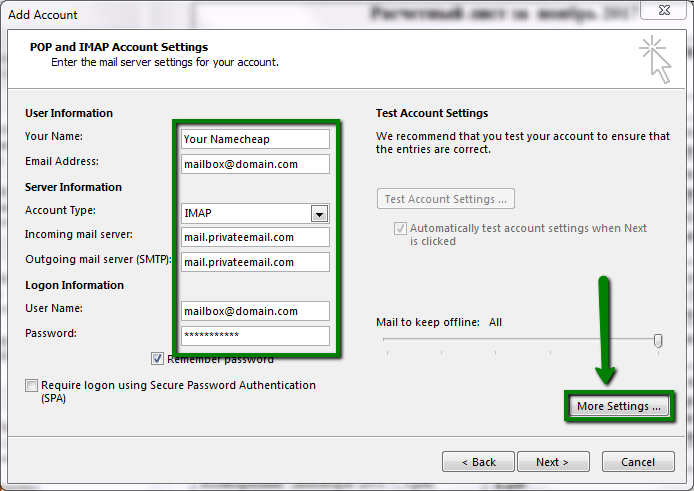
4. Next, click More Settings and go to the Outgoing Server tab.
Select the option called My outgoing server (SMTP) requires authentication and select Use same settings as my incoming mail server:

5. Go to the Advanced tab and use the following ports and encryption based on the connection type you have chosen:
- Incoming server (if are using IMAP): 993 port for SSL, 143 for TLS
- Incoming server (if you are using POP3): 995 port for SSL
- Outgoing server (SMTP): 465 port for SSL, 587 port for TLS
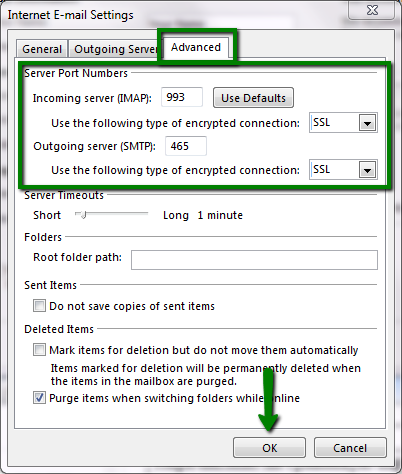
Click OK >> Next
6. In case all the settings are correct, you will receive the following message:
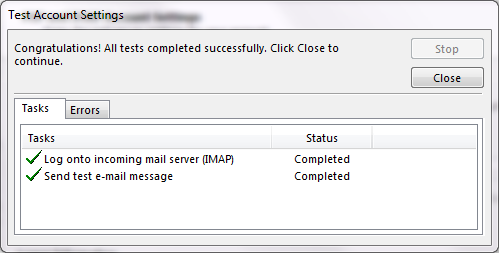
NOTE: If you added a large email account to the Outlook email client, it can cause the application pauses. In order to resolve the issue, please follow this guide.
That's it!








